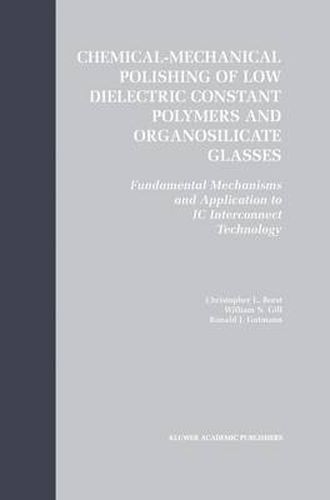Readings Newsletter
Become a Readings Member to make your shopping experience even easier.
Sign in or sign up for free!
You’re not far away from qualifying for FREE standard shipping within Australia
You’ve qualified for FREE standard shipping within Australia
The cart is loading…






This title is printed to order. This book may have been self-published. If so, we cannot guarantee the quality of the content. In the main most books will have gone through the editing process however some may not. We therefore suggest that you be aware of this before ordering this book. If in doubt check either the author or publisher’s details as we are unable to accept any returns unless they are faulty. Please contact us if you have any questions.
As semiconductor manufacturers implement copper conductors in advanced interconnect schemes, research and development efforts shift toward the selection of an insulator that can take maximum advantage of the lower power and faster signal propagation allowed by copper interconnects. One of the main challenges to integrating a low-dielectric constant (low-k) insulator as a replacement for silicon dioxide is the behaviour of such materials during the chemical-mechanical planarization (CMP) process used in Damascene patterning. Low-k dielectrics tend to be softer and less chemically reactive than silicon dioxide, providing significant challenges to successful removal and planarization of such materials. The focus of this text is to merge complex CMP models and mechanisms with experimental results with copper and low-&kgr to develop a comprehensive mechanism for low- and high-removal-rate processes. The result is a more in-depth look into the fundamental reaction kinetics that alter, selectively consume, and ultimately planarize a multi-material structure during Damascene patterning.
$9.00 standard shipping within Australia
FREE standard shipping within Australia for orders over $100.00
Express & International shipping calculated at checkout
This title is printed to order. This book may have been self-published. If so, we cannot guarantee the quality of the content. In the main most books will have gone through the editing process however some may not. We therefore suggest that you be aware of this before ordering this book. If in doubt check either the author or publisher’s details as we are unable to accept any returns unless they are faulty. Please contact us if you have any questions.
As semiconductor manufacturers implement copper conductors in advanced interconnect schemes, research and development efforts shift toward the selection of an insulator that can take maximum advantage of the lower power and faster signal propagation allowed by copper interconnects. One of the main challenges to integrating a low-dielectric constant (low-k) insulator as a replacement for silicon dioxide is the behaviour of such materials during the chemical-mechanical planarization (CMP) process used in Damascene patterning. Low-k dielectrics tend to be softer and less chemically reactive than silicon dioxide, providing significant challenges to successful removal and planarization of such materials. The focus of this text is to merge complex CMP models and mechanisms with experimental results with copper and low-&kgr to develop a comprehensive mechanism for low- and high-removal-rate processes. The result is a more in-depth look into the fundamental reaction kinetics that alter, selectively consume, and ultimately planarize a multi-material structure during Damascene patterning.